Themes – crowns
To learn more about the arms illustrated, click on the images.
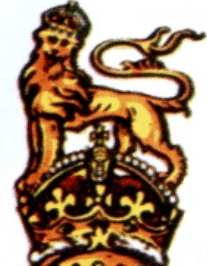
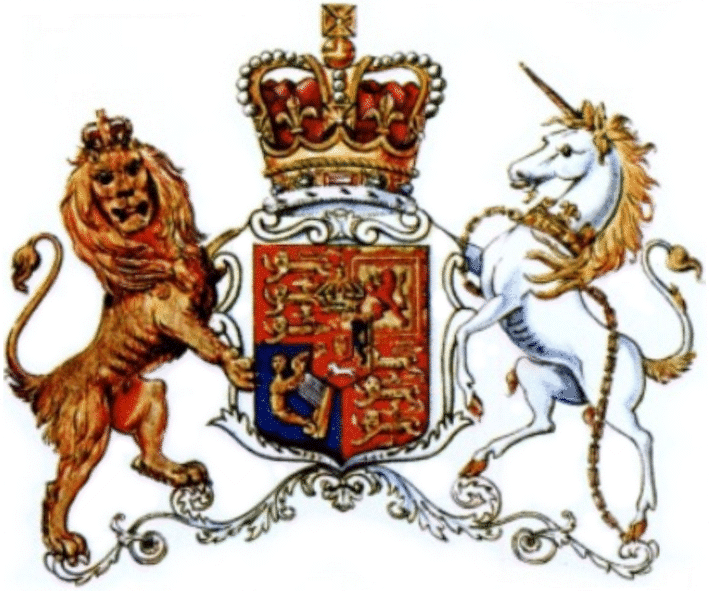
CROWNS of one sort or another have been part of official symbolism in Southern Africa since the first arrival of Great Britain as an occupying power in 1795. The English crest of a gold lion statant gardant, standing on the royal crown and himself crowned, has been an integral part of the coat of arms of the United Kingdom since the Union of the Crowns at the accession of King James VI of Scotland to the English throne in 1603. The Act of Union of 1707, by which Scotland and England were united, and that of 1800, which added Ireland to the Union, did not change this, nor did the separation of most of Ireland from the Union in 1922. Scotland has retained the use of its own royal crest, a red lion sejant affronty, both with the arms of Scotland alone, and with a Scottish version of the arms of the Union (with the Scottish lion in the first and fourth quarters), but its use has been limited to Scotland. So it is the English lion crest that has been seen in the many lands that have fallen under British rule. Strictly speaking, when the full royal armorial achievement is displayed, the lion crest should appear as well. However, it has often happened that the shield, supporters and motto have appeared ensigned by the crown alone, while the crown itself has been used as a symbol of royal authority for centuries. Different forms of the crown have been used at various times, as indicated on this page. In the early years of British rule at the Cape, the Kings of Great Britain were also the rulers of the German state of Hannover (or Hanover, as it was known to the British). This resulted in the appearance of two other devices in the sovereign’s arms. Until 1814, the German title borne by the British sovereign was Elector of Hannover. From 1801 onwards, when the arms of Hannover were borne as an inescutcheon (small shield in the middle) of the British royal arms, they were ensigned of (topped by) an electoral cap. As can be seen from the crowns at left and right above, it is usual in British practice for a metal crown to have inside it a red velvet cap of maintenance, lined with ermine. The Hanoverian examples below show a cap without a crown, and a crown without a cap. A third crown can be seen in both inescutcheons: the crown of Charlemagne, which was borne on a red shield (an inner inescutcheon or Herzschild) to symbolise the office of Arch-Treasurer of the Holy Roman Empire, which was held by the Elector of Hannover.
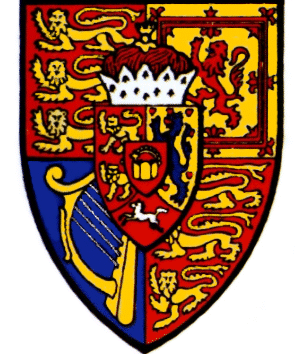
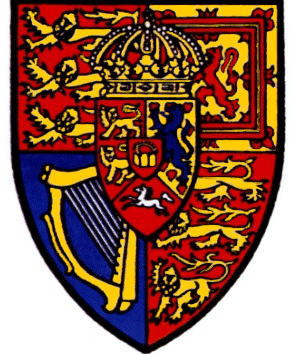
Of the states that have made up Southern Africa over the past century and more, only three have incorporated British royal crowns into their own armorial devices: the Orange River Colony (whose arms were also used by the Orange Free State Province for some two decades), the Province of Natal (which quite improperly used a crown of the wrong shape, containing a cap of maintenance which was black instead of red), and the Colony of Basutoland, which incorporated in its crest a royal crown within a Sotho shield.
The naval crown, in its British form, appears atop all Royal Navy ships’ badges, and has also been awarded to naval heroes. In South Africa, the town of Woodstock bore a naval crown in its crest.
Civic coats of arms often incorporate mural crowns. Examples of these can be found in the crests of Grahamstown, Port Elizabeth and East London. East London's is used to link two anchors, that of Port Elizabeth is coloured red and bears the three annulets of Van Riebeeck, Grahamstown’s has three ostrich feathers rising out of it, and Ibhayi’s has an anchor in front of flames.
An Eastern crown, with spikes representing rays of the sun, can be found in the crest of the Albany Divisional Council.
Closely akin to crowns are coronets, which also appear in personal arms. This applies especially to the European aristocracy; a British peer, for example, has a coronet appropriate to his or her rank. But coronets also appear as charges, and the so-called ducal coronet is often seen. In Armoria currently there is just one example, and it does not indicate ducal rank. The Rev Roy Snyman has one in his crest which alludes to the Dukes of Savoy.
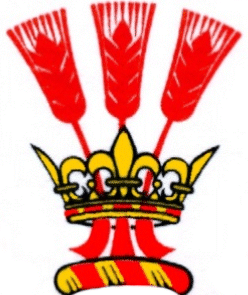
Strangely, specially devised crowns are a feature of the arms of seven of the nine new provinces of South Africa, adopted since 1994. Western Cape appears to have set the trend with a crown made up of a row of beadwork set against a gold rim, which is then heightened by alternating protea blossoms in gold and silver, and annulets in gold. Gauteng went the same route, with a crown made up of bees (borrowed from Pretoria, and representing industry) and symbols for iron. What is unusual about this device is that strictly speaking it is not a crown, since its base is a crest-wreath or torse, and the colours of the torse are silver and gold; blue and gold (the principal colours of the shield) would have been more appropriate.
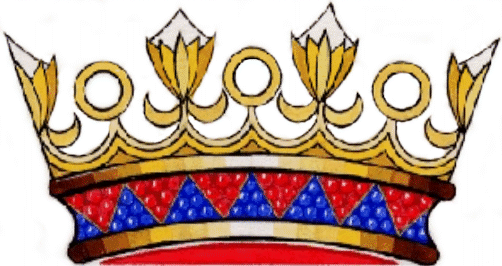

Beadwork, in the tradition of the Khoisan peoples, can also be found in the crest/crown of Northern Cape. Crops appear in the crests of the Free State, which has maize cobs in its crown, alternating with wheat, while North West features a sunflower blossom between two horns.
Limpopo and Mpumalanga both incorporate indigenous flora in their crown/crests, Limpopo featuring the Modjadji cycad, and Mpumalanga the Barberton daisy (incongruously coloured gold instead of its characteristic red). It is interesting to note that the only provinces that do not have crowns of any sort for crests are the two predominantly Nguni-speaking provinces of the Eastern Cape and KwaZulu-Natal.
Back to top of page
Back to themes index
Back to Armoria index
Comments, queries: Mike Oettle







